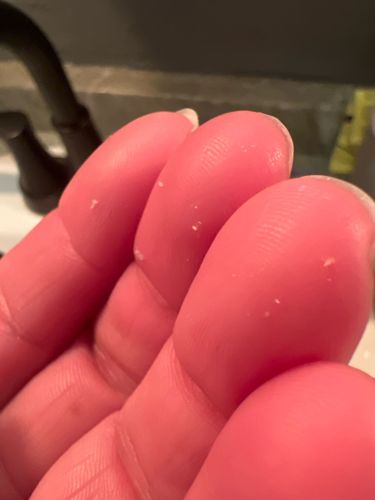Mites (general, speficially a type of dust mite or similar micro-arthropod)
Scientific Name: Too small and indistinct to identify to species/genus level. Likely from Phylum Arthropoda, Class Arachnida, Subclass Acari.
Order & Family: Order: Acari (Mites and Ticks), Family: Varies widely (e.g., Pyroglyphidae for dust mites)
Size: Typically microscopic, ranging from 0.1 to 0.5 mm in length. The specks in the image appear to be at the upper end of this range or aggregated matter containing mites.

Natural Habitat
Dwellings, especially in bedding, upholstered furniture, carpets, and dust, as well as natural environments like soil, plants, and animal fur/feathers.
Diet & Feeding
Varies by species. Many mites are detritivores, feeding on dead skin cells, dander, and organic debris. Some are parasitic, predatory, or herbivorous.
Behavior Patterns
Generally live in colonies, often preferring warm, humid environments. Dust mites are largely inactive, moving slowly and spending most of their lives consuming detritus. They do not bite or sting humans, but their waste products can cause allergic reactions.
Risks & Benefits
Potential risks include triggering allergies and asthma in sensitive individuals due to their fecal matter and body fragments. Generally, they pose no direct physical harm. Benefits (for specific species) include decomposition in ecosystems, pest control (predatory mites), and pollination (some plant mites).
Identified on: 10/26/2025